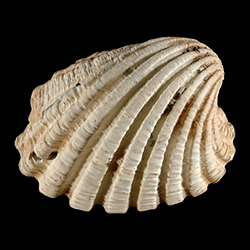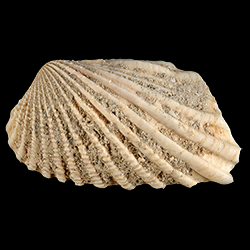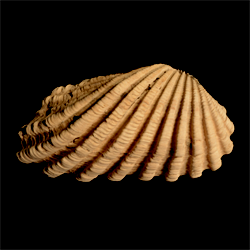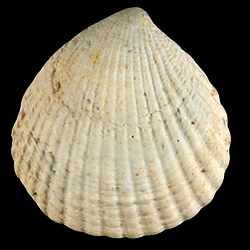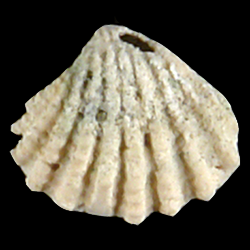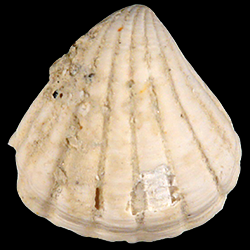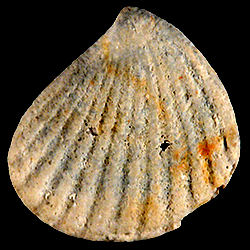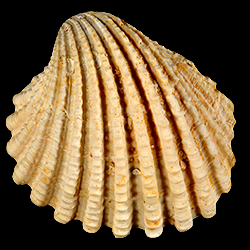
Carditidae
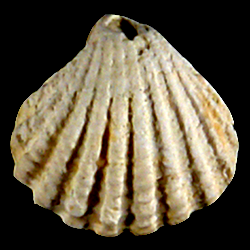
- Phylum: Mollusca
- Class: Bivalvia
- Order: Carditida
- Family: Carditidae
Overview
Common name: Little heart clams
Key morphological features: The Carditidae range in size up to ~100mm. The shells are equivalve, inflated and oval to rounded-rectangular to trapezoidal in outline. Exterior ornamentation consists of strong radial ribs, occasionally crossed by commarginal ribs as well, and are composed of aragonite. Valve interiors have a simple, uninterrupted pallial line and interior shell margins have crenulations corresponding to the exterior ribbing. Species of Carditidae are mostly isomyarian although in some species the anterior adductor muscle is smaller than the posterior muscle. The heterodont hinge is wide, and has two or three cardinal teeth per valve and both anterior and posterior lateral teeth. Source: Mikkelsen, P.M., and Bieler, R. 2008. Seashells of Southern Florida: Bivalves. Princeton, New Jersey: Princeton University Press. 503 pp.
Geological range: Devonian to Recent (Mikkelsen & Bieler, 2008).
Geographic distribution: A distributional map for modern Carditidae may be accessed from OBIS. A distributional map for ancient Carditidae may be accessed from the Paleobiology Database.
Diversity: There are 140 recognized living species of Carditidae and 25 genera (WoRMS database, unvetted). The Paleobiology Database recognizes 42 fossil genera and 757 fossil species (unvetted).
Paleoecology: The Carditidae are mobile, marine, filter-feeding bivalves, including species that live shallowly buried in sand or coarse sediments as well as species that live byssally attached to rocks. They feed on relatively coarse particles in the water, including diatoms. Females of many species brood their young and planktotrophic larvae are unknown in this family. Source: Mikkelsen and Bieler (2008).
Phylogenetic status: Paraphyletic. The recent molecular phylogenetic analysis by González and Giribet (2015) supports the paraphyly of Family Carditidae.
